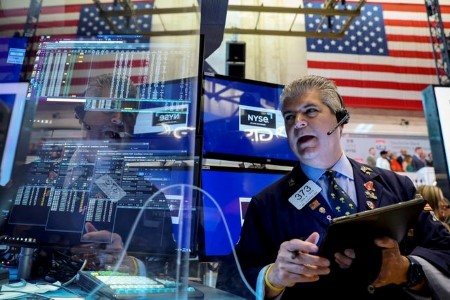




Quarterly Economic Growth Release: More BSP cuts to come
 DOWNLOAD
DOWNLOAD

Monthly Economic Update: Fed catches up
 DOWNLOAD
DOWNLOAD

Inflation Update: Steady and mellow
 DOWNLOAD
DOWNLOAD


S&P, Nasdaq end higher as July hot streak continues

NEW YORK, July 7 (Reuters) – Wall Street benchmarks ended up on Thursday, with the S&P 500 and Nasdaq recording their fourth successive higher closes, as traders leaned into US equities after the Federal Reserve hinted at a more tempered program of interest rate hikes.
US stock markets have stabilized in July after a brutal selloff in the first half against the backdrop of a surge in inflation, the Ukraine conflict, and the Fed’s pivot away from easy-money policy.
The S&P 500 index has closed higher in each of the first four sessions so far this month, after recording its steepest first-half percentage drop since 1970. The benchmark has not had five successive gains so far in 2022.
Minutes from the central bank’s June policy meeting, where the Fed raised interest rates by three-quarters of a percentage point, showed on Wednesday a firm restatement of its intent to get prices under control.
However, Fed officials acknowledged the risk of rate increases having a “larger-than-anticipated” impact on economic growth and judged that an increase of 50 or 75 basis points would likely be appropriate at the policy meeting in July.
The less hawkish tone was echoed in comments from Fed Governor Christopher Waller on Thursday. In calling fears of a US recession overblown, he advocated for a 50 basis-point hike in September.
Such sentiment was taken as a cue by some to add positions, including in high-growth stocks, which had suffered in the first half of 2022 as investors fretted over their prospects in a rising interest rate environment.
This benefited tech names big and small, with heavyweights Tesla Inc. (TSLA) up 5.5% and Google parent Alphabet Inc. (GOOGL) rising 3.7%, and Affirm Holdings Inc. (AFRM) and Avalara Inc. (AVLR) gaining, respectively, 17.1% and 16.4%.
“It’s starting to feel like real money is starting to come back,” said Louis Ricci, head trader at Emles Advisors.
“There’s no reason that the market cannot go down another 30%, but we think the risk is 30% to the downside but three to four times that to the upside.”
Though investors widely expect the Fed to hike rates by another 75 basis points in July, expectations of peak terminal rate next year have come down significantly amid growing worries of a global economic slowdown.
Fed funds futures traders are pricing for the benchmark rate to peak at 3.44% in March. Expectations before the June meeting were that it would increase to around 4% by May. It is currently 1.58%.
Elsewhere, a report on Thursday showed the number of Americans filing new claims for unemployment benefits unexpectedly rose last week, and demand for labor is slowing with layoffs surging to a 16-month high in June.
A closely watched employment report on Friday is expected to show nonfarm payrolls likely increased by 268,000 jobs last month after rising by 390,000 in May.
The Dow Jones Industrial Average rose 346.87 points, or 1.12%, to 31,384.55, the S&P 500 gained 57.54 points, or 1.50%, to 3,902.62 and the Nasdaq Composite added 259.49 points, or 2.28%, to 11,621.35.
Almost all of the S&P sub-sectors were higher, with the energy index’s 3.5% gain making it the best performer as oil and gas companies followed the rebound in crude prices from the previous day’s 12-week low.
The Philadelphia SE Semiconductor index climbed 4.5% after South Korea’s Samsung Electronics turned in its best second-quarter profit since 2018, driven by strong sales of memory chips.
Volume on US exchanges was 10.47 billion shares, compared with the 13.08 billion average for the full session over the last 20 trading days.
The S&P 500 posted 2 new 52-week highs and 29 new lows; the Nasdaq Composite recorded 24 new highs and 57 new lows.
(Reporting by David French in New York and Amruta Khandekar, Bansari Mayur Karmdar and Devik Jain in Bengaluru; Editing by Anil D’Silva and Matthew Lewis)
This article originally appeared on reuters.com





 By Reuters
By Reuters